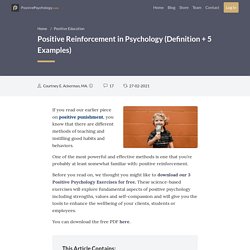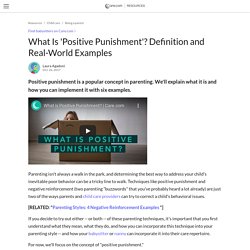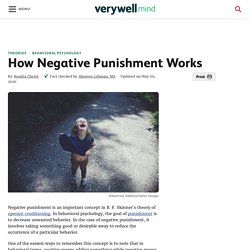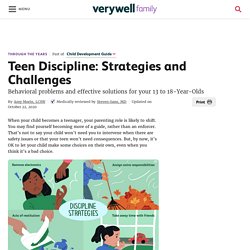

Operant Conditioning (B.F. Skinner) How Reinforcement and Punishment Modify Behavior Operant conditioning, also known as instrumental conditioning, is a method of learning normally attributed to B.F. Skinner, where the consequences of a response determine the probability of it being repeated. What Is Operant Conditioning? (and How Does It Explain Driving Dogs?) While second nature to many of us, driving a car is actually a fairly complex process.

At its most stripped down version, first you sit in the driver's seat, then you start the engine, then you shift into gear, and then you must simultaneously steer while keeping your foot on the gas pedal. That doesn't include things like adjusting your mirrors, verifying that you won't drive into another person or car, and so on. In one sense, it is incredibly impressive that three dogs in New Zealand have learned - in a fairly rudimentary way - to drive a car. They sit in the driver's seat, shift into gear, operate the steering wheel, and step on the accelerator. Those deserving the true accolades however are not the dogs, but the human trainers for their impressive patience and determination. Adolescent Psychology: What Makes Teens Different, And How Can Psychology Help? By: Joy Youell Updated December 17, 2020 Medically Reviewed By: Sonya Bruner.

Understanding Teenagers’ Brains and Behaviour. Risk Taking and Peer Pressure Adults often think of risk taking as being negative and associated with danger, however it’s a positive and necessary trait for development.

Risk taking is important as it pushes us to have new experiences and to challenge ourselves. It is well worth doing, even if we can’t be certain about there being a positive outcome, or that we might experience some uncomfortable feelings associated with it. Disrespectful teenage behaviour: what to do.
About disrespectful behaviour in teenagers Sometimes you might feel that interactions with your child all seem a bit like this: You – ‘How’s that project going?’

Positive Reinforcement. Negative Reinforcement. Operant conditioning: Positive-and-negative reinforcement and punishment. Negative Reinforcement: What Is It and How Does It Work? What is negative reinforcement?

Negative reinforcement is a method that can be used to help teach specific behaviors. With negative reinforcement, something uncomfortable or otherwise unpleasant is taken away in response to a stimulus. Over time, the target behavior should increase with the expectation that the unpleasant thing will be taken away. Read on to learn more about this type of learning. The relationship between behavior and consequences is part of a type of learning called operant conditioning. Positive Reinforcement in Psychology (Definition + 5 Examples) If you read our earlier piece on positive punishment, you know that there are different methods of teaching and instilling good habits and behaviors.

One of the most powerful and effective methods is one that you’re probably at least somewhat familiar with: positive reinforcement. Before you read on, we thought you might like to download our 3 Positive Psychology Exercises for free. These science-based exercises will explore fundamental aspects of positive psychology including strengths, values and self-compassion and will give you the tools to enhance the wellbeing of your clients, students or employees. You can download the free PDF here. What is the Meaning of Positive Reinforcement? Positive Reinforcement - The Big Bang Theory. Positive Punishment. Negative Punishment. What Is 'positive Punishment'? Definition And Real-World Examples. Positive punishment is a popular concept in parenting.

We'll explain what it is and how you can implement it with six examples. Parenting isn't always a walk in the park, and determining the best way to address your child's inevitable poor behavior can be a tricky line to walk. How Negative Punishment Works. Negative punishment is an important concept in B.

F. Skinner's theory of operant conditioning. In behavioral psychology, the goal of punishment is to decrease unwanted behavior. In the case of negative punishment, it involves taking something good or desirable away to reduce the occurrence of a particular behavior. What's The Difference Between Positive and Negative Punishment? - North Shore Pediatric Therapy. Operant conditioning: Positive-and-negative reinforcement and punishment. Operant Conditioning - Negative Reinforcement vs Positive Punishment. Reinforcement vs Punishment Psychology [Examples]
Reinforcement and punishment are often used as parenting tools to modify children’s behavior.
![Reinforcement vs Punishment Psychology [Examples]](http://cdn.pearltrees.com/s/pic/th/reinforcement-punishment-183049524)
Let’s review the difference between positive reinforcement and negative reinforcement, and the difference in outcomes between them. The Difference Between Positive And Negative Reinforcement. Discipline for Teens: Strategies and Challenges. When your child becomes a teenager, your parenting role is likely to shift.

You may find yourself becoming more of a guide, rather than an enforcer. That’s not to say your child won’t need you to intervene when there are safety issues or that your teen won’t need consequences. Parenting A Teen Through Positive Reinforcement - Back On Track. Most parents can agree: the teenage years can be rough! Hormones are raging, they are trying to gain more independence, and they spend a lot of time away from their parents and their home while hanging with friends. One minute they love and adore you, the next minute you ruined their life. Can many of you relate? Parenting Teens: When It Comes To Learning, Positive Reinforcement Trumps Punishment. Teens generally aren’t afraid to defy authority. Generations of parents know this, having tried different strategies for getting their adolescents to do what they ask — often in attempts to keep them safe and help pave a path toward success.
Now, a new study shows that rewards, rather than punishments, could be the way to get them to cooperate. Researchers at the University College London asked 18 volunteers aged 12 to 17 and 20 volunteers aged 18 to 32 to complete both a learning task and post-learning task in which they chose between abstract symbols, each associated with a fixed chance of reward, punishment, or no outcome.
As the trial progressed, participants learned which symbols were likely to lead to each result and adjusted their choices accordingly. Operant Conditioning Theory - The Skinner Approach. Skinner coined the term Operant Conditioning as a branch of Watsons Classical Conditioning and studied it by conducting experiments using animals, namely rats, placing them in what he called the "Skinner Box.
" Operant Conditioning consists of changing behaviour by the use of reinforcements which are given after the desired response is achieved. There are three types of responses that can follow behaviour: • Neutral operants: Responses from the environment that neither increase nor decrease the prospect of a behaviour being repeated. • Reinforcers: Responses from the environment that increase the likelihood of a behavior being repeated.
Reinforcers can be either positive or negative. • Punishers: Response from the environment that decrease the probability of a behavior being repeated. Punishment weakens behaviour. Skinner demonstrated the effectiveness of positive reinforcement through his experiment with the Skinner boxes and hungry rats.